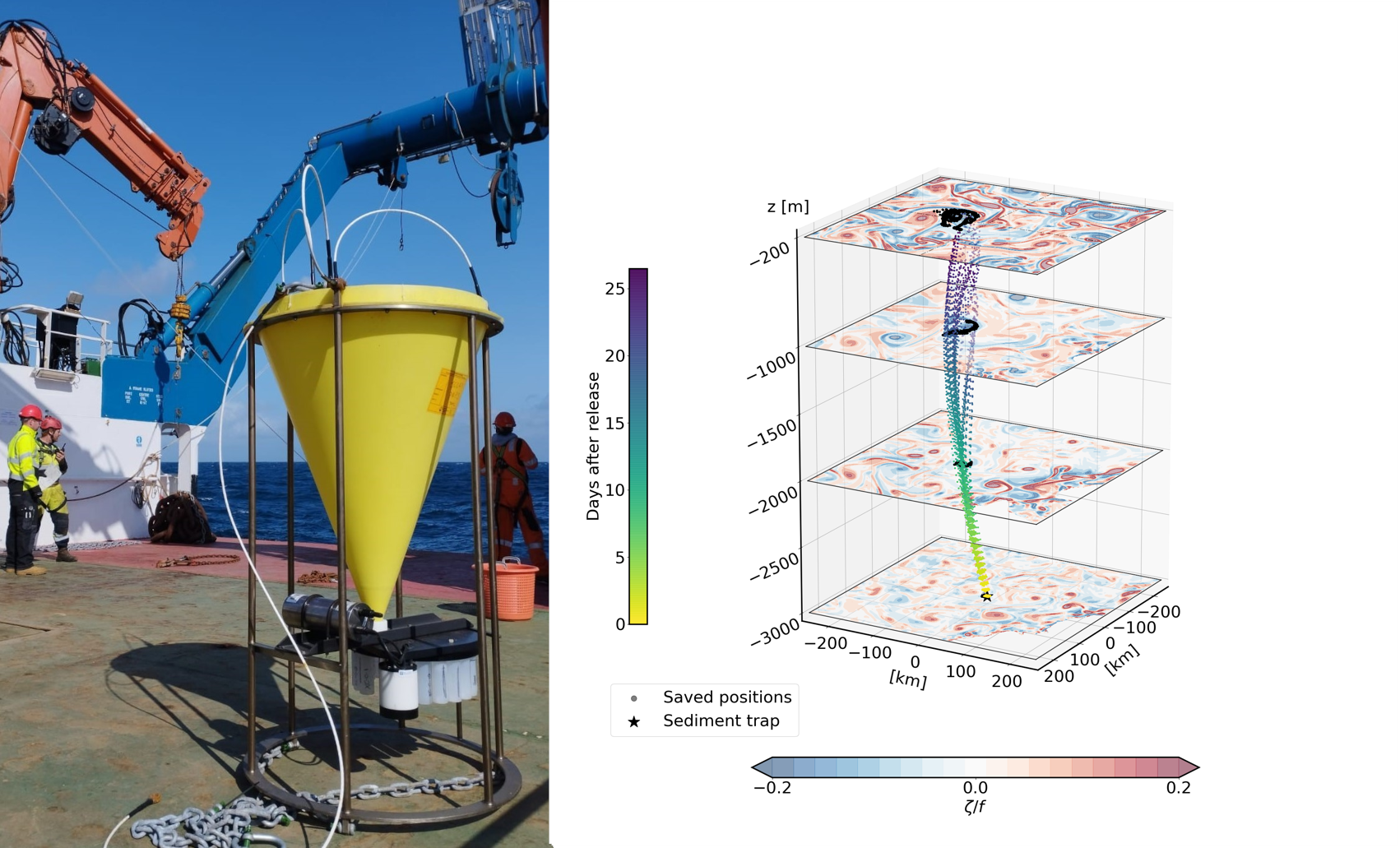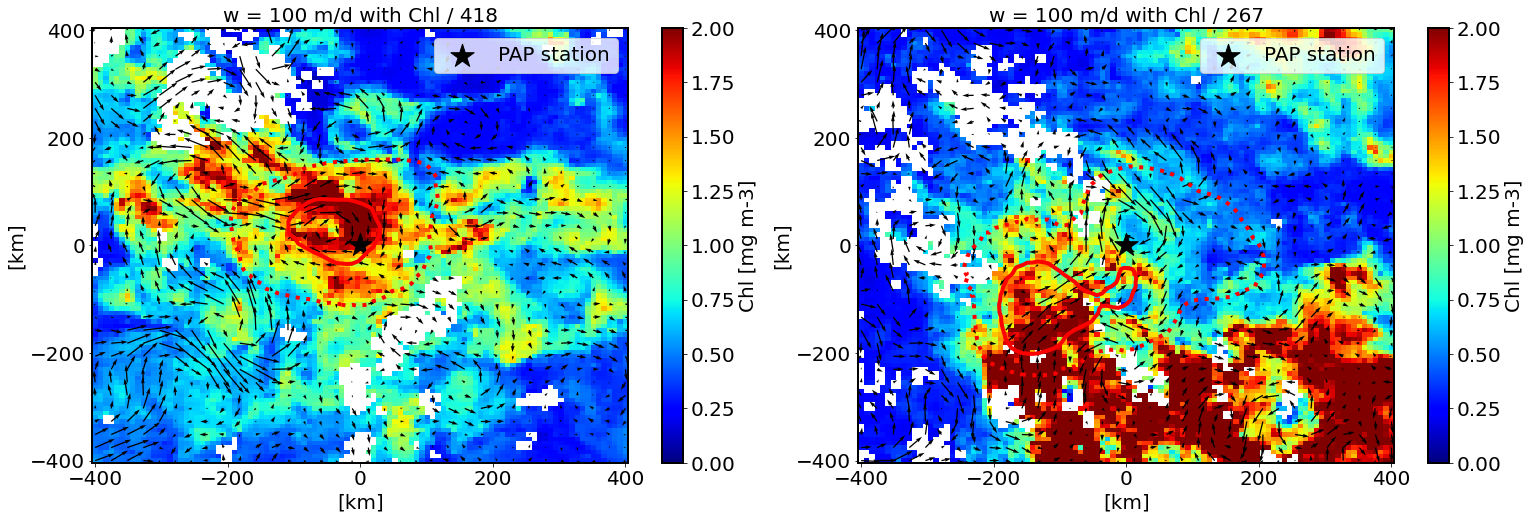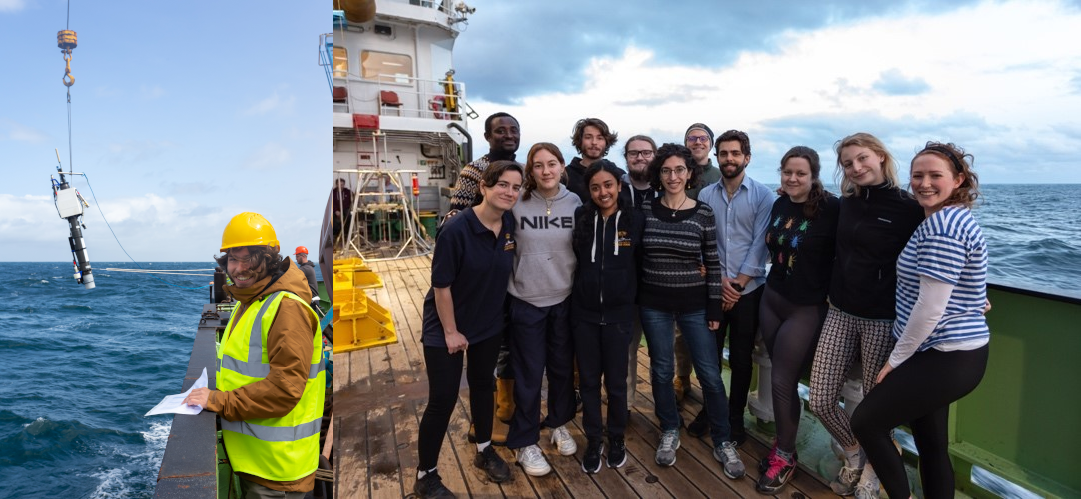Author: Théo Picard
My name is Théo Picard, and I am a PhD student at the Université de Brest, France. I had the chance to be awarded a CLASS fellowship in 2023. My work focuses on the biological carbon pump, a critical process for ocean deep food webs and carbon storage in the ocean. I am particularly interested in the sinking organic particles that export carbon for long time periods. While particle flux can be measured at depth by an instrument called sediment trap (Figure 1), it is challenging to link this data with surface observations because ocean circulation affects the sinking path. In this context, I developed a machine-learning tool predicting the catchment area (i.e., the surface origin of the particles trapped in sediment traps) from the sea surface temperature and the sea surface height. The neural network was trained using a series of Lagrangian experiments in a realistic high-resolution numerical model (Figure 1).

Figure 1 – A sediment trap during the JC247 cruise (left) and an example of Lagrangian backtracking on the CROCO numerical simulation (right).
During my CLASS-fellowship, I had the opportunity to apply my trained model at the Porcupine Abyssal Plain English station (PAP; 49°N, 16.5°W). In this region, sediment traps have been deployed every year during the PAP cruises for decades, making it one of the most sampled areas in the word. I was hosted by the Ocean BioGeosciences group team and supervised by Chelsey Baker who has a strong expertise on particulate organic carbon observations. Additionally, I had the opportunity to collaborate with Corinne Pelody and Richard Lampitt, who provided me with the data from PAP and offered valuable guidance. Using satellite images, we generated a first catchment area database of the region (Figure 2). This new dataset will enable finer analyses that could result in a better understanding of the carbon pump in the ocean.

Figure 2 – Prediction of the PAP catchment area. Red solid and dashed contours contain respectively 50% and 99% of the particles captured in the ST.
The CLASS-fellowship also afforded me the wonderful chance to participate in the JC247 PAP-SO research expedition which took place aboard the RRS James Cook. During this expedition, I was part of the pelagic group, filtering water from CTDs to extract chlorophyll concentration, particulate organic/inorganic carbon, size fractioning, etc. On top of that, a rich collaboration has been possible with the French program APERO I’m involved with. Notably, I could deploy a French BGC Argo float during the campaign (Figure 3). The data collected proved to be very helpful in preparing for the upcoming APERO cruise around the PAP site.

Figure 3 – Deployment of the APERO BGC Argo float during JC247 (left) and the JC247 young scientists crew (right)